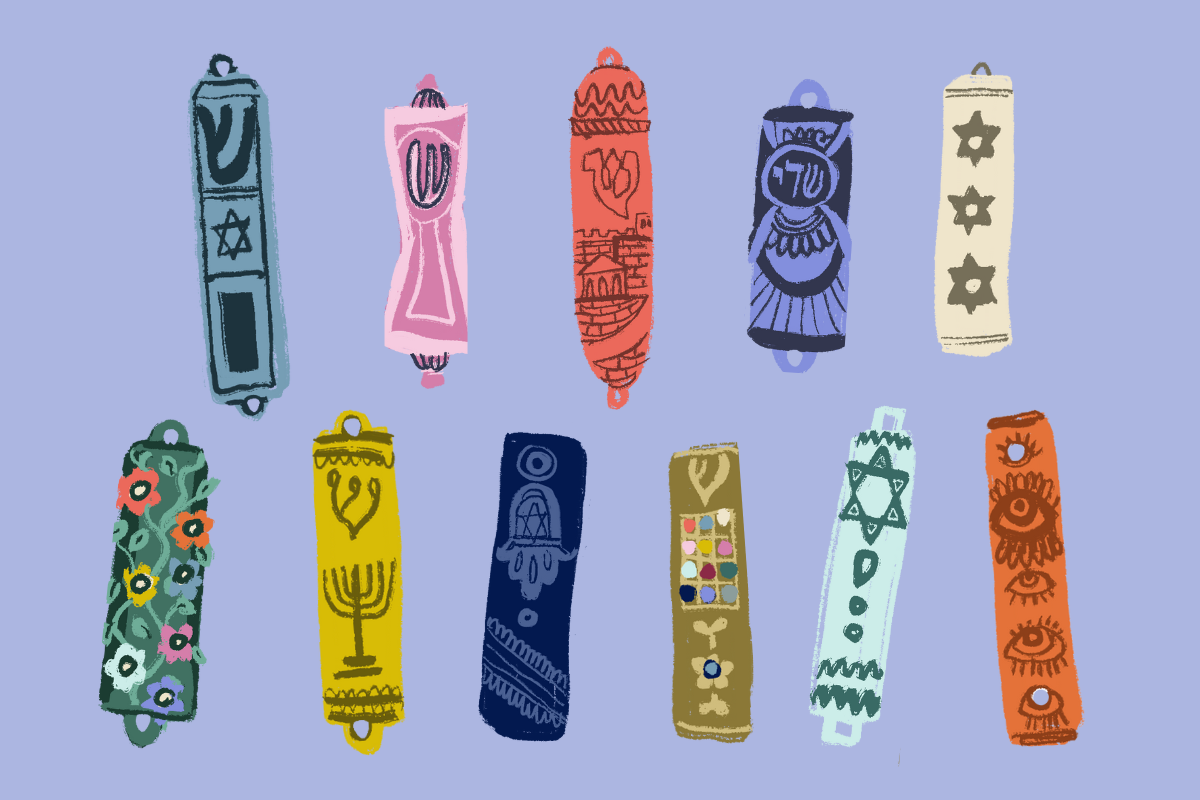Though it makes me a bad socialist, I am a material girl through and through. I moved around often as a child and very rarely had the luxury of my own room; consequently, I developed an inordinate attachment to my little tchotchkes and stuffed animals that made a space feel like mine. And my love of fun little objects has only grown more intense the more I’ve encountered the abundance of things in Judaism.
I first began to develop my Jewish identity in college. Though I grew up in a non-practicing household, I found an intimately Jewish corner of campus when I arrived at college, one that opened up a doorway into new parts of my personality. As I became more involved with Jewish life, I was drawn to not only the spirituality, philosophy, and theology of Judaism, but the variety of ways to build and adorn a Jewish space.
Now, fresh out of college and moving into my first real-world apartment, I’ve begun to think about the sort of Judaica I want to buy to make it into a Jewish space, particularly one that reflects my own Jewish values. (And my grad school budget, which means fitting these meaningful and sacred objects into a house full of salvaged dumpster furniture and hard-to-kill plants).
Last week, as my first act of moving into my new place, I knew it was time to buy my first mezuzah.
It’s only been four years since I even learned what a mezuzah was. After my freshman year of college I spent the summer interning at a Holocaust museum, where I found myself always toeing the line of satisfying my curiosity and trying not to sound like an oblivious fool. When I finally got a moment in the elevator with the most approachable of my coworkers, I had to ask. I believe my exact phrasing was, “Uh, so, what are the little boxes?” as I gestured at the one affixed to the elevator doorway.
Now, I wanted to find a mezuzah reflective of my Jewish beliefs and how I wanted my space to feel.
The mezuzah’s traditional role is to serve as a reminder of God’s presence, as well as the covenant between God and the Jewish people. I was eager to incorporate this ritual into my apartment for a slightly different purpose: For me, a mezuzah bears resemblance to a welcome mat. Its presence becomes a familiar sign synonymous with “home,” one that warmly greets you and affirms your sense of belonging as you walk through the door each day. Touching your hand to it, which is a traditional practice, is a reminder that an entire people made a covenant with God, a people that you belong to and a people that carries a bit of that divinity within each of them.
The importance of always carrying my Jewish values out into the world is something I hold in high regard, and I’ve always been drawn to the Jewish idea of tikkun olam, or perfecting the world in social justice. But what about the more private, intimate renewal of those values at home? I imagined that having a mezuzah would allow me to declare my home to be a Jewish space. That the adorned doorway would serve as a reminder, and create a sanctuary priming me to reflect on the parts of my life that empower me and the parts that drain me, the parts that align with my Jewish values and the ones that oppose them, as I passed its threshold.
But first, I needed to find one.
A quick search of “affordable mezuzah” turned up a dichotomy of passé ceramic cases — all of which were painted like floral couch upholstery — and oddly specific children’s mezuzah covers that were exclusively baseball themed. Amazon had some sleek designs and reasonable prices, but I somehow doubt that Jeff Bezos is peddling kosher mezuzah scrolls as well. Ultimately, I sacrificed a stylish case in order to buy a (hopefully) authentic klaf, which is the scroll inside the mezuzah written by a scribe.
Affixing the mezuzah to my door frame became a precision game. In Eastern European tradition the mezuzah is always fixed at an angle, due to an argument between two rabbis (shocker!) about whether it should be placed horizontally or vertically. While the high-quality mezuzot are often held in place by nails, I purchased one with double-sided tape to remind myself that I am still in my 20s and nowhere near affording my own real estate to mutilate. With only a finite amount of stickiness to waste, I had to make sure that the angle was at a perfect slant, so I adjusted. And adjusted. And adjusted, again and again until my arm got tired of holding itself up. I chose to believe that the shortcomings of my scrawny biceps were actually God’s way of telling me that the last angle was finally perfect, peeled off the paper backing, and stuck that bad boy on.
A small part of me worried that I was overhyping the emotional significance of my mezuzah, that I would come home and look at it as just some ornament. But I’m now a week into living in an unfamiliar place and my fears could not be more wrong. At the end of every day I look forward to stepping across the threshold of the world and my house to be greeted by my still-alive plants, my stuffed Kermit the Frog (who is unofficially but most definitely Jewish), and the perceptible reminder that I have a home in this city and a home in my Jewish identity.



